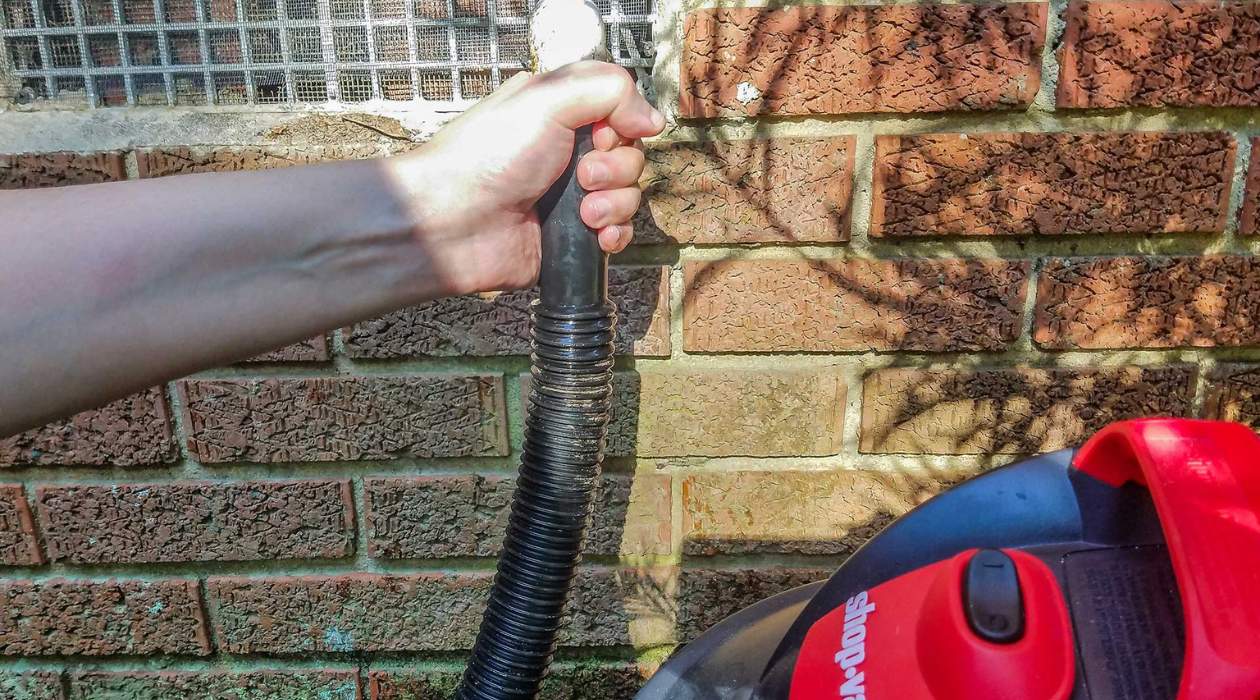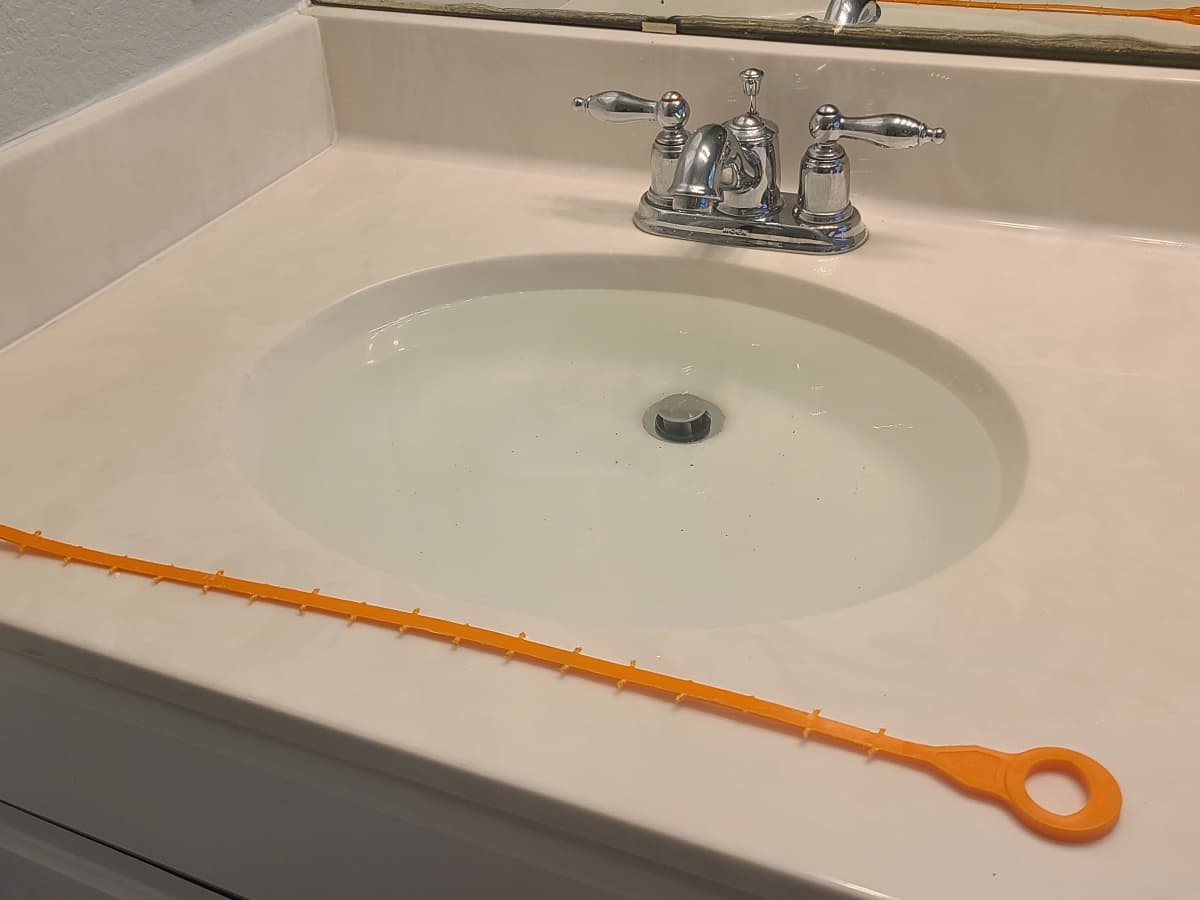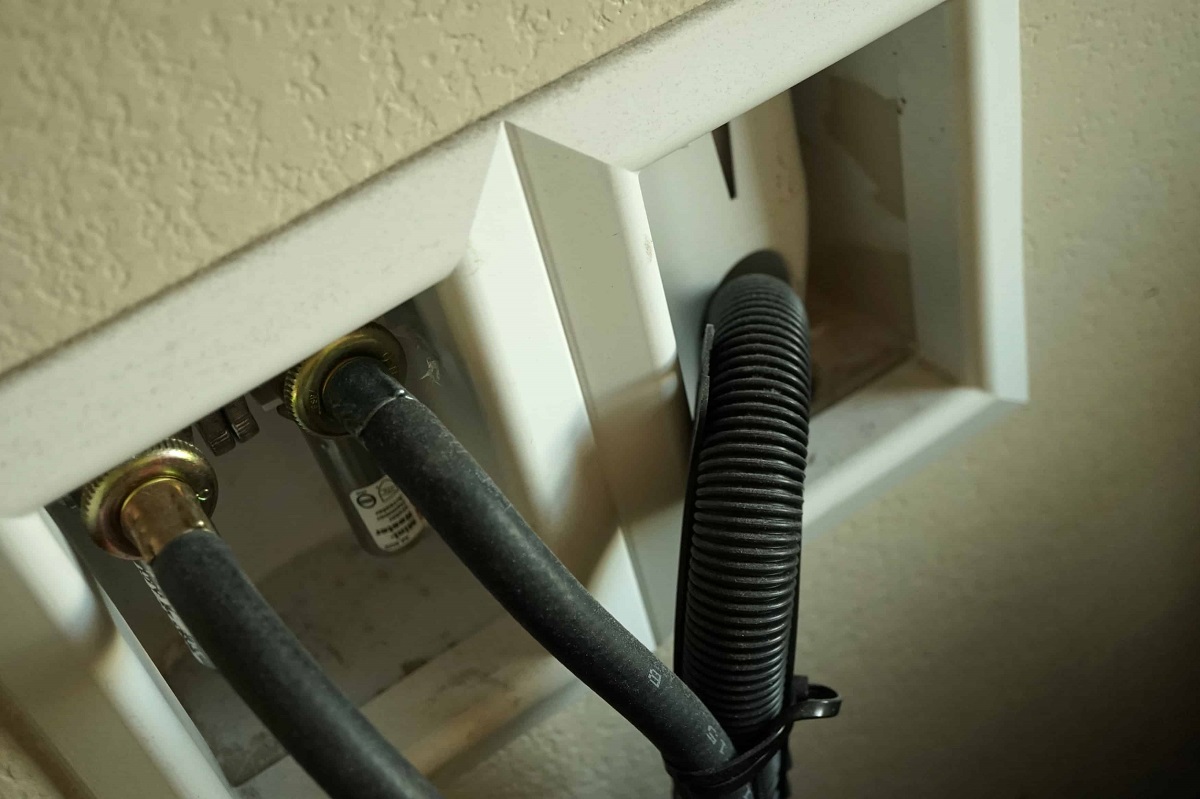Home>Furniture & Design>Outdoor Furniture>How To Clear An Outdoor Drain Pipe


Outdoor Furniture
How To Clear An Outdoor Drain Pipe
Modified: September 2, 2024
Learn how to effectively clear an outdoor drain pipe with our expert tips and techniques. Keep your outdoor furniture and design safe and protected.
(Many of the links in this article redirect to a specific reviewed product. Your purchase of these products through affiliate links helps to generate commission for Storables.com, at no extra cost. Learn more)
Introduction
When it comes to enjoying the great outdoors, a well-maintained outdoor living space is essential. From cozy patio furniture to lush gardens, every element plays a crucial role in creating an inviting and relaxing ambiance. However, even the most meticulously designed outdoor area can be marred by a clogged or slow-draining outdoor drain pipe. This common issue can lead to standing water, unpleasant odors, and potential damage to the surrounding landscape. Fortunately, with a little know-how and the right tools, clearing an outdoor drain pipe can be a manageable task for any homeowner.
In this guide, we will delve into the steps necessary to effectively clear an outdoor drain pipe, ensuring that your outdoor space remains pristine and functional. From understanding the problem to implementing preventative measures, we will cover everything you need to know to tackle this challenge with confidence. So, roll up your sleeves and get ready to restore proper drainage to your outdoor oasis. Let's dive in and discover the solutions to this pesky problem!
Key Takeaways:
- Keep your outdoor space pristine by understanding and addressing common causes of outdoor drain pipe clogs, using simple tools and natural solutions for effective clearing.
- Prevent future blockages by implementing proactive measures like regular maintenance, tree trimming, and eco-friendly cleaners to maintain a functional outdoor drain pipe.
Read more: How To Clear Blocked Outdoor Drains
Understanding the Problem
Before diving into the process of clearing an outdoor drain pipe, it’s crucial to understand the potential causes of the issue. Outdoor drain pipes can become clogged due to various factors, such as the accumulation of leaves, twigs, dirt, and other debris. Additionally, the presence of roots from nearby trees and shrubs can infiltrate the pipe, leading to blockages and restricted water flow.
Furthermore, outdoor drain pipes are susceptible to the buildup of organic matter, including algae and moss, which thrive in damp environments. Over time, these organic substances can constrict the pipe’s interior, impeding the natural flow of water and causing backups.
In some cases, the problem may stem from a poorly designed or deteriorating drainage system. Improper slope or grading, as well as damaged or corroded pipes, can contribute to drainage issues, resulting in stagnant water and potential flooding during heavy rainfall.
By recognizing the underlying causes of a clogged or slow-draining outdoor drain pipe, homeowners can better assess the severity of the problem and determine the most effective course of action. Whether it’s a simple accumulation of debris or a more complex issue related to the drainage system’s integrity, a clear understanding of the problem is the first step toward finding a solution.
Assessing the Drainage Issue
Before embarking on the task of clearing an outdoor drain pipe, a thorough assessment of the drainage issue is essential. Start by observing the outdoor area surrounding the drain pipe. Note any standing water, damp patches, or areas of slow drainage. This visual inspection can provide valuable insights into the extent of the problem and help pinpoint the location of the blockage or drainage inefficiency.
Next, consider the recent weather conditions. Heavy rainfall or storms can exacerbate drainage issues, leading to the accumulation of debris and sediment in the drain pipe. If the problem has emerged following inclement weather, it’s likely that the drain pipe has become clogged with a combination of organic matter and soil runoff.
It’s also important to assess the proximity of trees and shrubs to the drain pipe. Over time, the roots of plants can infiltrate outdoor drain pipes, causing obstructions and compromising the pipe’s integrity. If there are trees or large shrubs nearby, root intrusion may be a contributing factor to the drainage problem.
Furthermore, consider the age and condition of the outdoor drain pipe. If the property is older or the drainage system has not been inspected in several years, there is a possibility that the pipe has deteriorated, developed cracks, or become misaligned, leading to reduced functionality and potential blockages.
By carefully evaluating the drainage issue, taking into account environmental factors, landscaping features, and the condition of the drain pipe, homeowners can gain a clearer understanding of the underlying causes of the problem. This assessment sets the stage for effectively addressing the issue and restoring optimal drainage to the outdoor area.
Tools and Materials Needed
Before tackling the task of clearing an outdoor drain pipe, it’s essential to gather the necessary tools and materials to ensure a successful outcome. Here’s a comprehensive list of items that will aid in the clearing process:
- Gloves: Durable, waterproof gloves will protect your hands from debris and sharp edges while working on the drain pipe.
- Protective Eyewear: Safety goggles or glasses shield your eyes from splashing water, dirt, and any particles dislodged during the clearing process.
- Plumbing Snake or Auger: A flexible plumbing snake or auger is invaluable for dislodging and removing stubborn blockages within the drain pipe.
- Garden Hose: A garden hose with a nozzle attachment provides a steady stream of water to flush out debris and assess the flow of water through the drain pipe.
- Bucket or Drain Pan: Having a bucket or drain pan on hand allows you to collect any water or debris that emerges from the drain pipe during the clearing process.
- Trowel or Hand Shovel: A trowel or hand shovel is useful for removing surface debris and accessing the entry point of the drain pipe.
- Baking Soda and Vinegar: These household items can be used to create a natural, effervescent solution to help break down organic matter and clear minor blockages.
- Broom or Brush: A broom or stiff brush aids in clearing away leaves, dirt, and other surface debris near the drain pipe.
- Tarp or Plastic Sheet: Placing a tarp or plastic sheet beneath the work area helps contain any mess and facilitates the disposal of debris.
- Flashlight: A reliable flashlight enables you to inspect the interior of the drain pipe and identify blockages or damage.
By assembling these essential tools and materials, homeowners can approach the task of clearing an outdoor drain pipe with confidence and efficiency. With the right equipment at their disposal, they can effectively address the drainage issue and restore proper functionality to the outdoor drainage system.
To clear an outdoor drain pipe, try using a drain snake or a pressure washer to remove any clogs or debris. Make sure to wear gloves and eye protection when working with the drain.
Clearing the Outdoor Drain Pipe
Now that the necessary tools and materials are assembled, it’s time to embark on the process of clearing the outdoor drain pipe. Follow these step-by-step guidelines to effectively address the drainage issue:
- Clear Surface Debris: Begin by clearing any visible debris, such as leaves, twigs, and dirt, from the area surrounding the drain pipe entry point. Use a broom or brush to sweep away surface debris and create a clear workspace.
- Access the Drain Pipe: Use a trowel or hand shovel to access the entry point of the drain pipe. Clear away any soil or mulch that may be obstructing the opening, allowing unobstructed access to the pipe.
- Inspect the Drain Pipe: Shine a flashlight into the drain pipe to assess the interior for blockages, standing water, or visible damage. Take note of any significant obstructions or signs of root intrusion.
- Utilize a Plumbing Snake or Auger: Carefully insert a plumbing snake or auger into the drain pipe and maneuver it through the interior to dislodge and remove blockages. Rotate the snake as needed to navigate around bends and obstructions.
- Flush the Drain Pipe: With the assistance of a helper, use a garden hose with a nozzle attachment to flush water through the drain pipe. This helps dislodge remaining debris and provides insight into the flow of water through the pipe.
- Observe Water Flow: Monitor the flow of water as it exits the drain pipe. Ideally, the water should flow steadily and unimpeded. If there are signs of slow drainage or backups, further clearing may be necessary.
- Apply Natural Solutions: For minor blockages, consider pouring a mixture of baking soda and vinegar into the drain pipe to create a foaming, cleansing action. Allow the solution to sit for a period before flushing it out with water.
- Inspect and Replace: After clearing the drain pipe, conduct a final inspection to ensure that all blockages have been removed. If the pipe shows signs of damage or deterioration, consider consulting a professional for repair or replacement.
By following these steps and utilizing the appropriate tools, homeowners can effectively clear an outdoor drain pipe, restoring optimal drainage to their outdoor living space. This proactive approach ensures that the outdoor area remains free from standing water and potential damage caused by drainage issues.
Read more: What Is A Drain Pipe In Plumbing
Preventative Measures
Once the outdoor drain pipe has been successfully cleared, it’s important to implement preventative measures to minimize the risk of future blockages and drainage issues. By taking proactive steps to maintain the drainage system, homeowners can preserve the functionality of their outdoor living space and prevent potential water damage. Consider the following preventative measures:
- Regular Maintenance: Schedule routine inspections of the outdoor drain pipe to remove any accumulating debris and assess the overall condition of the drainage system. This proactive approach can help identify potential issues before they escalate.
- Trim Trees and Shrubs: Keep trees and shrubs near the drain pipe pruned to prevent root intrusion. By minimizing the growth of roots near the drainage system, homeowners can reduce the risk of blockages and damage to the pipe.
- Install a Drain Cover: Consider installing a drain cover or grate over the entry point of the drain pipe to prevent leaves, debris, and small objects from entering and causing blockages. Regularly clean the cover to ensure unobstructed water flow.
- Use Eco-Friendly Cleaners: Avoid using harsh chemical cleaners that can harm the environment and the drainage system. Opt for eco-friendly cleaning solutions when clearing and maintaining the outdoor drain pipe.
- Monitor Landscaping Runoff: Be mindful of landscaping practices that may contribute to soil erosion and runoff entering the drain pipe. Properly manage mulch, soil, and landscaping materials to minimize the introduction of debris into the drainage system.
- Professional Inspection: If drainage issues persist or the outdoor drain pipe exhibits signs of damage, seek the expertise of a professional plumber or landscaping specialist. A professional inspection can identify underlying issues and provide solutions for long-term drainage maintenance.
By incorporating these preventative measures into their regular outdoor maintenance routine, homeowners can safeguard their outdoor drain pipe against potential blockages and ensure the continued functionality of their outdoor living space. With proactive care and attention, the drainage system can effectively manage water flow and preserve the integrity of the surrounding landscape.
Conclusion
Clearing an outdoor drain pipe is a vital aspect of maintaining a functional and inviting outdoor living space. By understanding the common causes of drainage issues, assessing the severity of the problem, and utilizing the appropriate tools and techniques, homeowners can effectively address clogged or slow-draining drain pipes. Through proactive measures and regular maintenance, they can also minimize the risk of future blockages and preserve the integrity of the drainage system.
It’s important for homeowners to approach the task of clearing an outdoor drain pipe with attentiveness and a commitment to long-term maintenance. By taking the time to inspect, clear, and implement preventative measures, they can ensure that their outdoor space remains free from standing water, odors, and potential damage caused by drainage issues.
Ultimately, maintaining a well-functioning outdoor drain pipe contributes to the overall enjoyment and longevity of the outdoor living area. With clear drainage in place, homeowners can fully appreciate their outdoor furniture, lush gardens, and inviting landscapes, knowing that the drainage system is effectively managing water flow and preserving the beauty of their outdoor oasis.
By following the guidelines outlined in this comprehensive guide and staying proactive in their outdoor maintenance efforts, homeowners can enjoy a seamless and worry-free outdoor experience, free from the hassles of drainage issues. With a clear and functional outdoor drain pipe, they can continue to savor the beauty and tranquility of their outdoor retreat.
Frequently Asked Questions about How To Clear An Outdoor Drain Pipe
Was this page helpful?
At Storables.com, we guarantee accurate and reliable information. Our content, validated by Expert Board Contributors, is crafted following stringent Editorial Policies. We're committed to providing you with well-researched, expert-backed insights for all your informational needs.















0 thoughts on “How To Clear An Outdoor Drain Pipe”